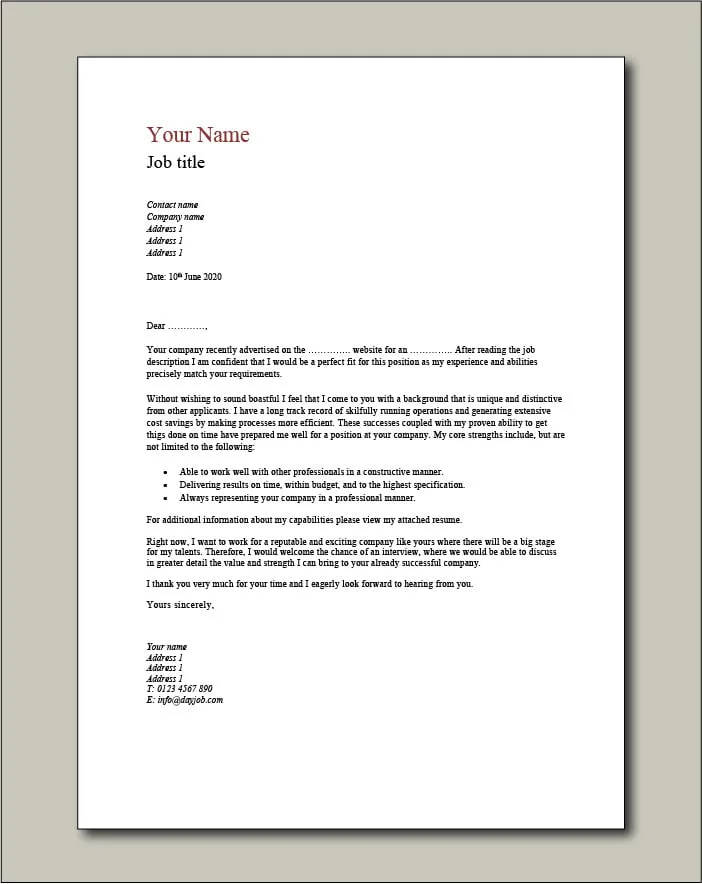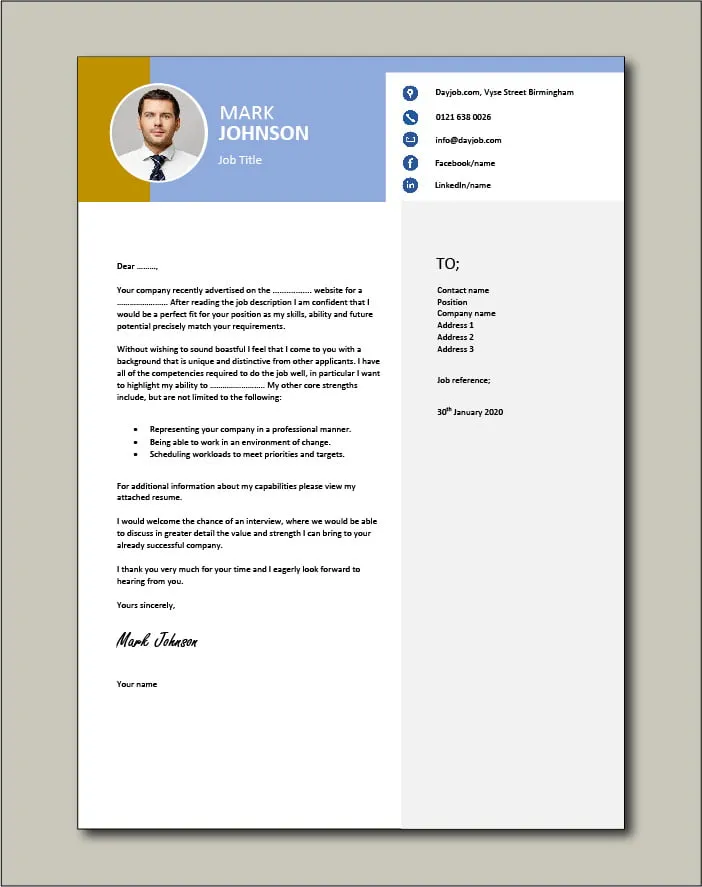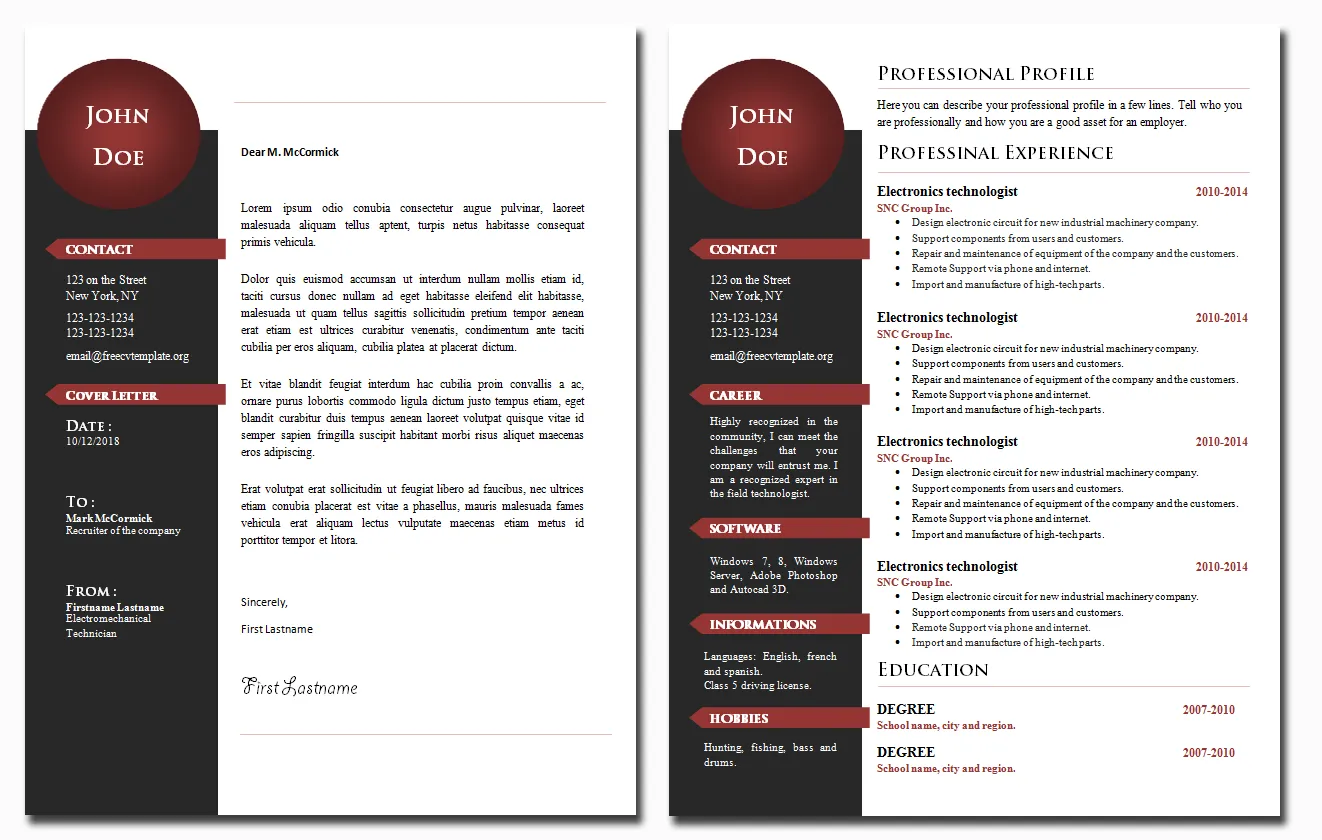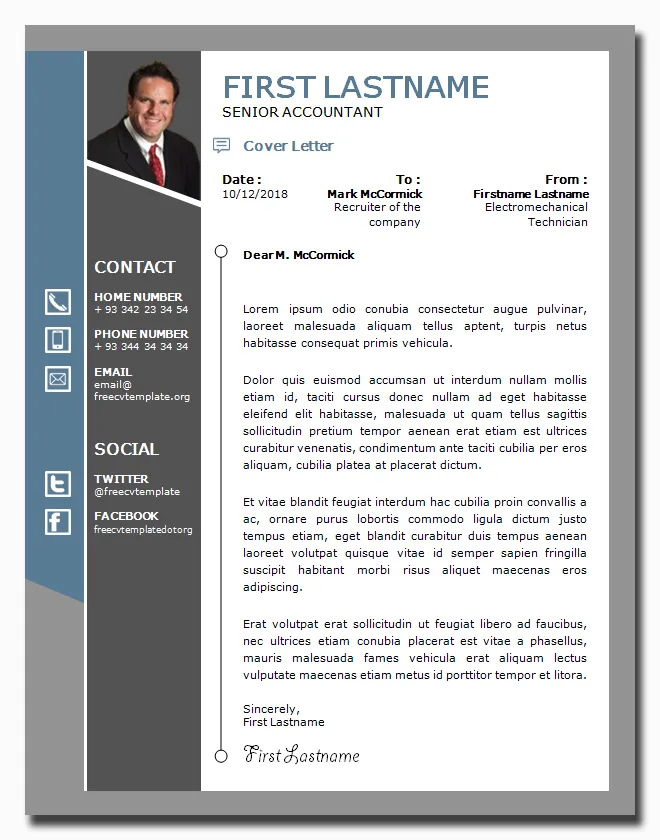What is a CV Cover Letter
A CV cover letter, often simply called a cover letter, is a crucial document that accompanies your curriculum vitae (CV) or resume when you apply for a job. Think of it as your personal introduction to a potential employer. It’s your chance to make a strong first impression and persuade the hiring manager to read your CV. Unlike a CV, which is a comprehensive summary of your qualifications, a cover letter is more of a narrative. It allows you to explain why you’re the perfect fit for the specific role and company, highlighting the most relevant aspects of your experience and skills. It’s an opportunity to showcase your personality, demonstrate your enthusiasm, and clearly articulate your career goals in relation to the opportunity.
Why You Need a CV Cover Letter
In today’s competitive job market, a well-crafted CV cover letter is no longer optional; it’s a necessity. It provides context to your CV, helping the recruiter or hiring manager understand your career trajectory, your motivations, and how your skills align with the job requirements. Without a cover letter, your CV might appear generic or fail to highlight the most relevant information. The cover letter offers a platform to tell your story, explain gaps in your employment history (if any), and demonstrate your understanding of the company and the role. It allows you to personalize your application, showing that you’ve taken the time and effort to research the company and tailor your application to their specific needs. Many employers automatically discard applications without a cover letter because it indicates a lack of attention to detail and a lack of genuine interest in the position.
Key Components of a CV Cover Letter

A compelling CV cover letter typically includes several key components that work together to create a persuasive and professional document. Each section should be carefully crafted to contribute to your overall goal of securing an interview. These components include your contact information, the date, the recipient’s details, a compelling opening paragraph, a section highlighting your skills and experience, a section where you quantify your achievements, a tailored section for the job description, a demonstration of your passion, a strong closing paragraph, an expression of gratitude, and a clear call to action. Adhering to a well-structured format not only presents your information logically but also makes it easier for the hiring manager to quickly grasp your qualifications and suitability for the role.
Your Contact Information
At the very top of your cover letter, provide your full name, address, phone number, and email address. Ensure your email address is professional and appropriate; avoid using nicknames or informal language. This information should be clearly displayed so that the hiring manager can easily contact you. The formatting should be clean and easy to read. It’s crucial to make it simple for the employer to reach out to you without having to search for your contact details. Consider using a slightly larger font size for this section to make it stand out without being overwhelming. Consistency in formatting with your CV is advisable, further reinforcing your professionalism.
Date and Recipient Details
Following your contact information, include the current date. Then, address the letter to the hiring manager or the specific person listed in the job posting. If a name is not provided, research the company’s website or LinkedIn to find out who is responsible for hiring. If you are unable to find a name, using a general salutation such as ‘Dear Hiring Manager’ is acceptable, but always try to find a specific person’s name to personalize your letter. Directly addressing the recipient shows that you have taken the time to research the company and the role. After the recipient’s name and title, include the company’s name and address. This level of detail demonstrates your thoroughness and attention to detail.
Opening Paragraph

Your opening paragraph is your first chance to grab the reader’s attention. Start with a strong statement that immediately highlights your interest in the position and the company. Clearly state the position you are applying for and how you learned about the opportunity. Briefly mention a key accomplishment or skill that aligns with the job requirements to make a compelling first impression. Avoid generic phrases like ‘I am writing to apply for the position…’ Instead, aim for a more engaging and enthusiastic approach. The opening should set the tone for the rest of your letter and make the reader want to continue reading. Make sure that the tone of your opening reflects the company’s culture.
Highlighting Your Skills and Experience
The body of your cover letter should focus on demonstrating how your skills and experience align with the requirements of the job. Review the job description carefully and identify the key skills and qualifications the employer is seeking. Then, provide specific examples from your past experiences that showcase how you have used those skills to achieve positive results. Use action verbs to describe your accomplishments, such as ‘managed,’ ’led,’ ‘developed,’ or ‘implemented.’ Focus on the most relevant aspects of your background. Don’t simply restate your CV; instead, elaborate on your achievements and explain the impact you made in previous roles. This section should provide concrete evidence of your abilities and potential.
Quantifying Your Achievements
Whenever possible, quantify your achievements with numbers and data. For instance, instead of saying ‘Improved sales,’ say ‘Increased sales by 20% within six months.’ Providing measurable results helps the employer understand the tangible impact you have made in your previous roles. Use percentages, dollar amounts, or other metrics to illustrate your successes. Quantifying your achievements not only demonstrates your capabilities but also adds credibility to your claims. Be specific about the outcomes you achieved and the methods you used. Data-driven examples will make your cover letter more compelling and memorable. Including metrics shows the hiring manager the value you bring to the company.
Tailoring to the Job Description

A generic cover letter will not impress a hiring manager. Tailor each cover letter to the specific job and company you are applying for. Carefully review the job description and identify the keywords and requirements. Then, use these keywords throughout your letter and provide specific examples of how your skills and experience align with the employer’s needs. This shows that you have taken the time to understand the role and that you are genuinely interested in the opportunity. Research the company’s mission, values, and culture and incorporate this information into your letter. Show that you understand the company’s goals and explain how you can contribute to their success. This level of personalization sets you apart from other applicants.
Demonstrating Your Passion
Let your enthusiasm for the role and the company shine through. Share your passion for the industry or the specific type of work you are applying for. Explain why you are excited about the opportunity and what motivates you. Expressing genuine interest in the role and the company is a key factor in making a positive impression. This could be accomplished by mentioning specific projects or areas that interest you. Show the hiring manager that you are not just looking for a job but are genuinely excited about contributing to the company’s success. Use enthusiastic language, but remain professional in your tone. Passion can also be shown by detailing how the company aligns with your career goals.
Closing Paragraph
Your closing paragraph should summarize your key qualifications and reiterate your interest in the position. Briefly restate why you are a good fit for the role, emphasizing your most relevant skills and experience. Thank the hiring manager for their time and consideration. Avoid simply repeating the same information; instead, offer a concise recap of your qualifications. This section provides a final opportunity to leave a lasting positive impression. Show confidence in your abilities without being arrogant. The closing paragraph is an important part of a complete cover letter.
Expressing Gratitude

Always express your gratitude for the hiring manager’s time and consideration. Thank them for reviewing your application and taking the time to learn about your qualifications. Showing appreciation demonstrates professionalism and respect. A simple phrase like ‘Thank you for your time and consideration’ is sufficient. This is a common courtesy, but it is essential. Your closing must be polite and demonstrate professionalism. This is important even if you are not the best fit for the position.
Call to Action
End your cover letter with a clear call to action. Indicate your availability for an interview and express your eagerness to discuss your qualifications further. Make it easy for the hiring manager to take the next step by explicitly stating your interest in the interview process. Provide contact information, so they can contact you directly. Encourage them to reach out to you at their earliest convenience. This final step signals your proactive approach and shows you are keen to move forward.
Formatting and Design
The formatting and design of your cover letter should be clean, professional, and easy to read. Use a standard font like Times New Roman, Arial, or Calibri, and maintain a consistent font size throughout the document. Use single-spacing and 1-inch margins. Keep your cover letter concise, ideally no more than one page. Break up large blocks of text with paragraphs and bullet points to make the content more digestible. Ensure there are no spelling or grammatical errors. A well-formatted cover letter shows that you pay attention to detail and take pride in your work.
Choosing the Right Font

Selecting the right font is crucial for the readability and overall presentation of your cover letter. Opt for professional and easy-to-read fonts such as Times New Roman, Arial, Calibri, or Helvetica. Avoid using fancy or overly stylized fonts, as they can be difficult to read and may detract from the content. Ensure that the font size is appropriate, typically between 10 and 12 points. Use a consistent font throughout the document, including the headings and body text. The chosen font should reflect your professionalism and attention to detail.
Maintaining Professionalism
Throughout your cover letter, maintain a professional tone and language. Avoid using slang, jargon, or overly casual language. Use formal language and address the recipient with respect. Keep your tone positive and enthusiastic, but avoid being overly assertive or demanding. Proofread your cover letter carefully to ensure there are no typos, grammatical errors, or formatting inconsistencies. Your goal is to create a positive impression, showcasing your written communication skills. This also includes a clean layout and a well-organized document.
Proofreading and Editing
Proofreading and editing are essential steps in the cover letter writing process. Before submitting your application, carefully proofread your cover letter for any errors in grammar, spelling, and punctuation. It is helpful to read your cover letter aloud to catch any awkward phrasing or unclear sentences. Consider having a friend or family member review your cover letter for a second opinion. Typos and errors can undermine your credibility and make a negative impression. Ensure that your cover letter is free of errors and reflects your attention to detail. A polished cover letter demonstrates professionalism and competence.
Common Mistakes to Avoid

Be aware of common mistakes that can undermine your cover letter. Avoid using generic cover letters that are not tailored to the specific job or company. Do not include excessive information or irrelevant details. Avoid boasting or making exaggerated claims. Do not use negative language or criticize previous employers. Ensure that your cover letter is free of typos, grammatical errors, and formatting inconsistencies. Avoid including personal information or controversial topics. Focus on the requirements and how you meet them. By avoiding these common mistakes, you can significantly improve your chances of making a strong first impression.
